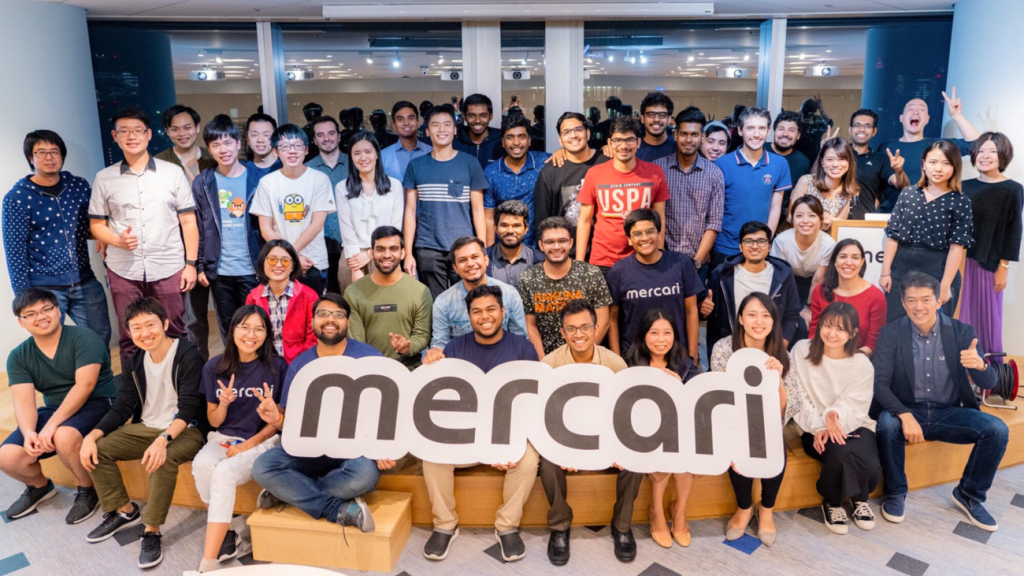Self-Introduction
Hello everyone. I’m hiroi, manager of the Engineering Office.
My team works on a number of projects in order to achieve the mission of “providing the best employee experience for all engineers at Mercari”. I’m sure the team name does not really give you an idea of what we do, so if you want to know more about my team, please read this article.
The first task I worked on after joining the company was to create Engineering Ladder.
Engineering Ladder, which has been published on the Mercari Engineering website recently, explains how engineers at Mercari should be and how they can advance their career.
In this article, I will be talking about why and how Engineering Ladder was created, and what kinds of changes it has brought about.
Recommended for
This article describes how Engineering Ladder, which plays an important role when it comes to helping engineers develop their career and fostering an engineering culture, has been created and utilized.
I recommend this article to not only those trying to create an engineering organization or culture, but also EMs who are crucial to building an organization, and those aspiring to become EMs in the future.
What is unique about Engineering Ladder is that it is a documented culture that was created from the bottom up, and is updated continuously. Considering this characteristic, I believe this article is recommended especially for those interested in building a system like Engineering Ladder. Your opinions and thoughts about this article are more than welcome.
Overview
Mercari’s growth has been accompanied by an improvement in diversity, which sometimes has led to situations where engineers are not aligned in terms of the direction they are headed in and their understanding. To address this issue, we launched a project to introduce Engineering Ladder with the aims of putting our engineering culture into words in great detail to avoid misunderstanding, and creating opportunities for discussions.
Engineering Ladder was created through a project led by volunteers that included EMs and team members.
After a lot of trial and error, it now plays an essential role for evaluating and hiring engineers. It has also helped avoid misunderstanding between members about evaluation and hiring and has made it easier to share our culture.
What is Engineering Ladder?
I’m sure many of you are not familiar with Engineering Ladder.
I didn’t know the concept of it either until I joined Mercari.
The official name of it is Engineering Career Ladder, which is often referred to as Career Ladder, and we call it Engineering Ladder in Mercari.
In general, it helps you visualize your career paths by breaking down the roles and responsibilities of each position based on the difficulty and salary of it, and defining the skills required for each position. A lot of companies including ones outside of Japan such as Spotify, Medium, Circle CI, and Google have introduced it, and oftentimes it’s linked to grades.
If you want to know more about it, search “Engineer Career Ladder”.
How Engineering Ladder is Used in Mercari
Mercari’s Engineering Ladder is broken down based on the internal grade system, describing the skills and competencies required for each grade, and is used as criteria mainly for evaluation, hiring, and setting objectives.
It is used for evaluation where you talk with your manager to assess if you have the skills required for your current grade, and what skills you need to acquire to move up to the next grade, identifying your strengths and weaknesses.
Example of How Engineering Ladder Is Used for Evaluation
In Mercari, we evaluate employees based on the three company values “Go Bold”, “All for One”, and “Be a Pro”, and this is how Engineering Ladder can be utilized in order to conduct evaluation more effectively.
[Value]
Be a Pro
[Engineering Ladder]
Able to write code that is highly testable and readable
The values are understood well throughout the company, but you need to judge whether a certain action you took was professional or if you are professionally competent, of which each person has a different interpretation. Oftentimes these different interpretations make it difficult to reach an agreement.
On the other hand, evaluating people based on whether they can write code that is highly testable is relatively easier and smoother because there is a widely known shared knowledge that we all can refer to, which makes it easier to have a discussion even if there is a conflict of opinions.
When you think about your career development, it’s much easier to identify what you need to learn in order to advance your career if your manager tells you that “you need to be able to write code that is highly testable”, rather than “you need to become more professional”.
As mentioned above, Engineering Ladder is used for evaluation, setting objectives, helping people think about career development, and fostering a culture.
Issues That Arose in an Ever-Growing Organization
We started creating Engineering Ladder in 2019 when there were some issues within the engineering organization.
Issues Accompanying the Rapid Organizational Growth
The first issue we faced was differences in understanding of expectations, which was caused by a swift change in how people work due to the rapid organizational growth. In many cases, how you work changes as the size of an organization increases, and in general, the larger the organization is, the more complicated things are, and it requires a lot of arrangements and efforts to achieve total optimization.
Since Mercari grew rapidly, people were working in different ways, with some working in a way that was optimal for a larger organization and others didn’t, which led to a situation where everyone had different ideas about what kind of behavior deserves praise.
As a result, people were not aligned in terms of their expectations, the way they communicated, and attitudes toward work, which caused a lot of issues,
Issues Accompanying Globalization
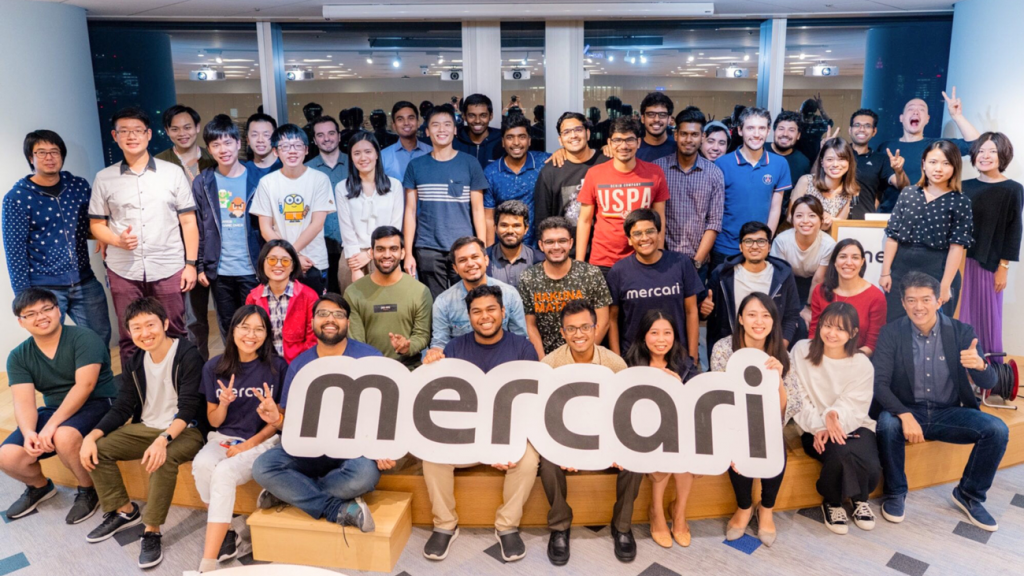
A picture of the 2019 new grads training
The second issue that arose was related to diversity and acceleration of different interpretations that was brought by our efforts to become a global company.
Currently, about half of the engineers in Mercari’s engineering organization are from outside of Japan, promoting globalization of the organization.
With different cultural backgrounds, it was difficult to get everyone on the same page as to the meaning of “Go Bold”. More than half of the EMs are from outside of Japan, and even EMs had different interpretations of “Go Bold”, which led to situations where members would say “my previous EM considered this behavior Go Bold, but my current EM disagrees with it!”.
The two issues that I shared above had different causes, but what they had in common was the misalignment in culture and direction to head in.
In order to build a robust engineering organization, we had to clarify what the ideal engineer that everyone should aim to become is.
We introduced Engineering Ladder as a foundation of common understanding, which allows us to have a discussion when a misalignment occurs and enhance the culture of the engineering organization.
Describing the Culture with Engineering Ladder While Releasing and Using It
Coming up With and Refining Ideas
Engineering Ladder started from a document made by suguru, the CTO of Mercari JP. We created a document that described the competencies that Mercari’s engineers should have, and started having open discussions. At the time, there were about 20 competencies that dozens of engineers were trying to refine through a lot of discussions.
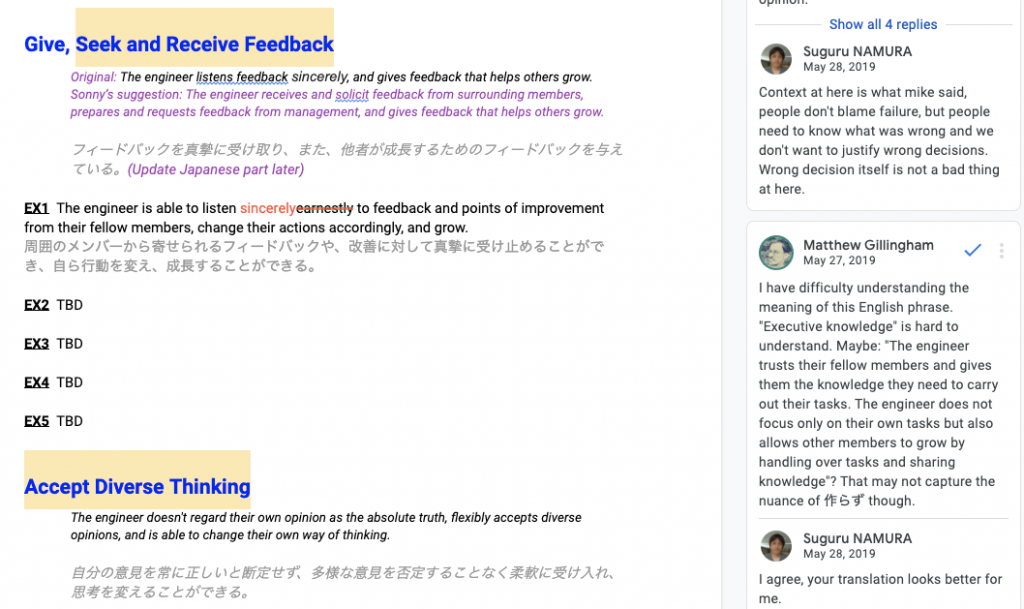
suguru replying to all the comments on a doc
Also, we appointed the Engineering Office as project manager and established a committee with a dozen EMs.
The committee led the discussions about how to utilize and refine Engineering Ladder.
From Trial Operation to Release
After finalizing the competencies required for Mercari’s engineers, we faced several challenges to put them into practice.
The first challenge was to ensure the right balance and relations between Engineering Ladder and the values. We had to clarify what the ideal engineer is without jeopardizing Mercari’s culture, and to do this, we created Engineering Principles, which consist of nine basic principles based on which Mercari’s engineers are required to act. We grouped similar competencies and linked them to the values.
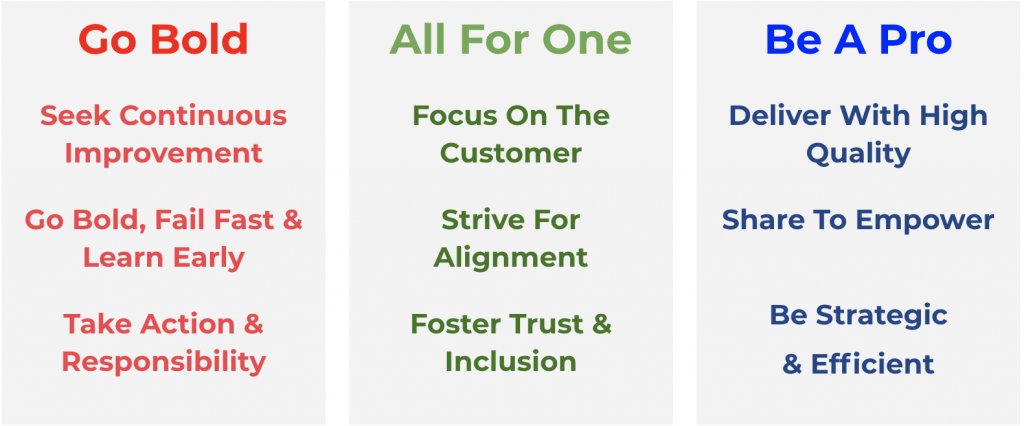
Engineering Principles that were created based on Mercari’s values.
We decided to use it for evaluation first, because changes to the evaluation criteria affect the culture the most. The second challenge was to think about how to make good use of it for evaluation.
One of the biggest discussion points was whether to have engineers take a look at the skills required for all the grades or only for the relevant grade. Mercari has a grade system and everyone has their own grade. Everyone has their own strengths and weaknesses, which means that there are cases where people with the same grade are equipped with different skills. So we first created a metric based on the grades and principles, and gave scores for each of them in order to put emphasis on diversity as much as possible.
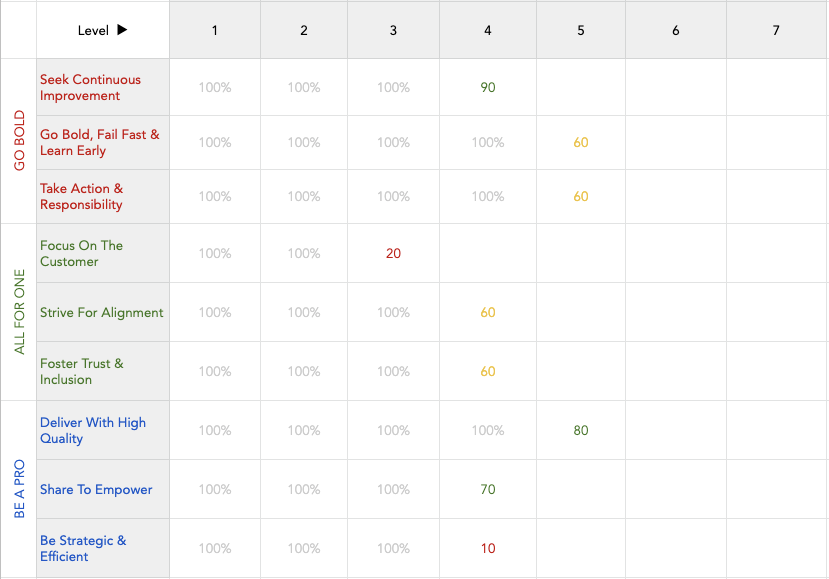
Metric based on the principles and grades, with different scores for each principle.
We verified the effectiveness of the metric with the project members and volunteers. As a result, we found this approach had several issues.
The biggest issue was the cost. Each skill was described in great detail, and it took a lot of time to read all of them, with some taking longer than an hour. It also took a lot of time and effort to give members scores and compare them. Up until then, we just had to evaluate and compare members with the same grade, but the need to evaluate members based on skills required us to compare them with different grades.
In Mercari, we conduct evaluation four times a year, and we also have a peer review system in place, which allows us to evaluate members carefully, but at the same time, it requires a lot of time and effort. In particular, the fact that EMs had to spend a lot of time for evaluation was a major issue. This is because EMs have to evaluate a number of members, and they tend to get a lot of peer review requests. For this reason, we came to a conclusion that this approach didn’t work for Mercari’s engineering organization at the time, even though we thought it was one of the ideal approaches.
After several discussions, we decided to go with a method where we ask members to focus on their current grade, and encourage them to take a look at the skills required for the next grade. The reason for it is that we want members to get an idea of what they need to work on in order to move up to the next level.
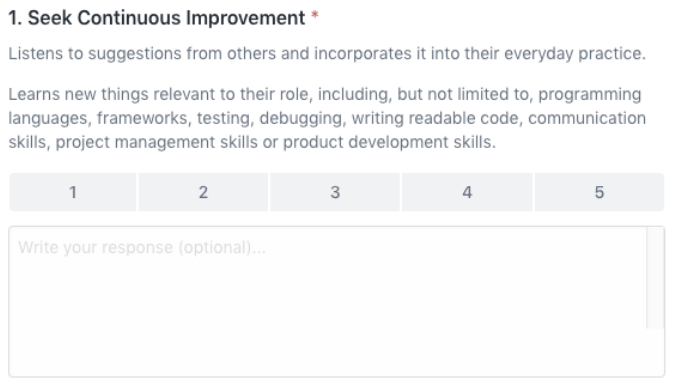
Skills required for the current grade are displayed, based on which evaluation is conducted.
After thorough verification of this method, we made adjustments and started rolling it out for all the engineers in Mercari JP for further verification. We conducted both evaluation using the existing method and evaluation with Engineering Ladder. Even though it was really tough to do both, more than 80% of managers engineering members did them and gave us feedback on the evaluation system. The overall reaction was not bad so we replaced the existing evaluation with the one with Engineering Ladder from the following evaluation period, and now it is officially used for evaluating engineers.
Operation After Release
We still have issues after releasing Engineering Ladder. Currently, the committee formed by a few volunteers and the Engineering Office provides a system for continuous improvement of Engineering Ladder. We have a cycle where we conduct a survey after evaluation in order to gauge the satisfaction level quantitatively and the time spent on evaluation, as well as collect qualitative comments, identify problems, and make improvements.
Engineering Ladder is managed on GitHub so anyone can contribute by creating issues or sending pull requests. As of the writing of this blog, there are more than 40 issues. We release a refined version of Engineering Ladder every six months for evaluation and hiring. The reason why we release it every six months is to avoid a situation where the evaluation criteria change during the evaluation period, and save the trouble of making it align with the company-wide evaluation criteria.
Sharing the Culture Both Inside and Outside of the Company and Revamping the Values
Applying Engineering Ladder to Evaluation
Using Engineering Ladder for evaluation has promoted understanding among managers and between members and managers.
We gauge the level of satisfaction with evaluation on a scale of 1 to 10, and about 90% of members give a score of 6 or above, with the average score of 8, indicating that a lot of engineers are satisfied with evaluation.
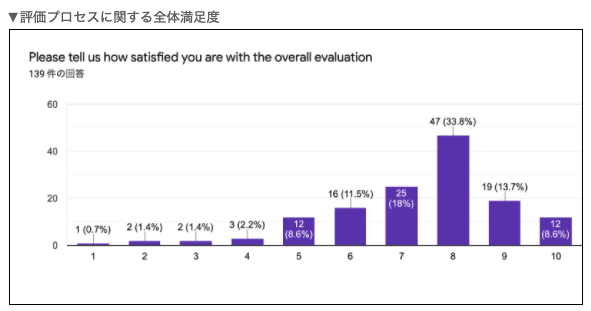
Results of the survey conducted in August 2020.
We’ve received comments such as “criteria are set from the perspective of engineers, making it easier to evaluate”, and “now I’m more satisfied with the evaluation results than before”.
Applying Engineering Ladder to Hiring
As for hiring, we were evaluating candidates based on criteria centering on the values, but since Engineering Ladder has been introduced, it is more closely tied to the internal evaluation system.
Now we have question items based on Engineering Ladder.
Engineering Ladder has allowed us to share what kind of people Mercari is looking for and the skills required for each position with our candidates.
It’s going to take a long time before we can see the numerical results since we’ve just made Engineering Ladder open to the public, but I think making Mercari’s culture open will allow candidates to see if they will be a good fit for the company.
The Impact on Spreading the Culture
Engineering Ladder has brought a positive impact not only on evaluation and hiring, which we expected, but also on spreading the culture. Not only has it clarified the ideal engineer that people should aim to become, but also it has made it easier to keep people in the loop when there are small changes to the direction or updates.
For instance, we have a big issue where people have different understanding of documentation culture. When we foster documentation culture going forward, we will be able to give people an idea of what kind of documentation skills are required for engineers by describing them in Engineering Ladder.
It’s not easy to change the core values, but what I think is unique about Mercari is that we can flexibly update the behavior expected for people as the organization takes on new challenges and the situation that the organization is in changes.
The Culture Where Anyone Can Contribute
Engineering Ladder is created from the bottom up, which means that anyone can help create a culture rather than having management members decide on it from the top down.
Up until now, we couldn’t do anything about the values even if there were issues with them. We were able to give feedback to HR, but there was a limit to how we could contribute to something that was not explicit about how it should be interpreted.
But now, we are able to have discussions to find issues based on Engineering Ladder that anyone can refer to. In addition to this, not only can every engineer raise issues but they can also make direct contributions by sending a PR to update the description of Engineering Ladder. Of course we have a proper review process in place in order to ensure the overall consistency of Engineering Ladder, but I think the mechanism that allows anyone to get involved in revamping the culture has high affinity with the engineering culture.
Future Tasks and Vision
Engineering Ladder still has a lot of issues, and there are so many things we want to do.
The first thing we have to do is to make it easier to use. There are about 300 engineers in Mercari, and almost all of them use it. It’s become easier to talk about it than the values, but some people still think that their understanding of Engineering Ladder is different from that of others, or that it’s difficult to think about Engineering Ladder because it’s still vague To address this issue, we have been having discussions to think about how we can make it possible for anyone to share examples of actual behavior in order to make Engineering Ladder more specific.
We also have issues with tools. We use an in-house evaluation tool, and because we thought using Engineering Ladder for evaluation would require a wide scope of verification and adjustments, we decided to use a different tool rather than implementing Engineering Ladder to the in-house evaluation tool. We use the in-house evaluation tool for calibrations and salary adjustments, which means we use two different tools for evaluation, so some people say that it is confusing. We need to choose a tool that’s best for us.
We also want to roll out Engineering Ladder to different organizations within the Mercari Group. Mercari JP, Merpay, and Souzoh have the same grade system, and members often move to a different organization within the Mercari Group. I think we should all be using the same metric.
So now we are preparing to expand the scope of Engineering Ladder so that it can be used not only in Mercari JP, but also in Merpay and Souzoh.
What’s unique about Mercari is that each organization offers you different opportunities. Even though Mercari JP, Merpay, and Souzoh collaborate with each other, each organization has its own challenges. I want people to be able to take on different challenges within the Group for their career development, and I believe that having a common underlying culture will make it easier for people to move to a different organization and enhance a sense of unity.
Conclusion
This is how we have created the culture that’s constantly updated from the bottom up, and what has happened as a result in Mercari.
Thank you for reading this article, and I hope it gives a real sense of what it is like to work and how an organizational culture is shaped in an organization as large and global as Mercari.
I’ll be really happy if it helps teams and engineers that are trying to create a culture similar to that of Mercari. I’m looking forward to hearing your thoughts and opinions. Engineering Ladder and the relevant systems are far from perfect, and we will continue to refine them.
If you are interested to know about how Mercari thinks engineers should be, and what kind of environment is necessary to achieve it, please read this article. We are also looking for those who want to work with us.
